Coconut Chutney is a beloved South Indian condiment crafted from freshly grated coconut, blended with roasted chana dal, green chilies, and ginger. This mixture is tempered with whole spices, urad dal, curry leaves, dried red chilies, and asafoetida, resulting in a creamy and flavorful accompaniment to traditional dishes such as Idli, Dosa, Uttapam, Medu Vada, and other South Indian delicacies. Discover how to prepare this essential Indian side dish with my easy-to-follow step-by-step guide and video!

About Coconut Chutney
Chutneys are a variety of condiments originating from India, made from a diverse range of ingredients. This site features recipes for tomato, coriander, peanut, tamarind, and onion chutneys, among others.
Coconut Chutney, a staple of South Indian cuisine, is typically served with breakfast or snack dishes. At its core, it consists of finely ground fresh coconut meat, combined with either green or dried red chilies and salt.
The chilies add a touch of heat, while garlic or ginger can enhance the savory depth. A tempering of oil with crackling mustard seeds, fried urad dal, crisp curry leaves, and asafoetida elevates the flavor of this otherwise simple coconut chutney.
About My Recipe
This easy coconut chutney recipe has been a family favorite for decades. Its regular presence on our dining table speaks volumes about its deliciousness!
Prepared in the Tamil Nadu style, this recipe incorporates roasted chana dal, also known as chana daria, which lends a rich and nutty flavor. While roasted chana dal is easily found in India, it may not be available everywhere. You can either fry these lentils at home or skip them altogether; the chutney will still taste fantastic.
If fresh coconut is unavailable, feel free to substitute with frozen coconut or unsweetened desiccated coconut flakes. This adaptable recipe works with whatever ingredients you have on hand.
Moreover, you can customize the basic recipe by adding various ingredients. For instance, incorporating roasted sesame seeds, dried red chilies, and a hint of tamarind creates a delightful sauce for steamed rice!
The versatility of coconut chutney is one of its greatest attributes! In addition to pairing with breakfast items like idli, dosa, and vada, it complements numerous South Indian snacks. We love it with Upma, Semiya Upma, Pongal, and as a dip for snacks like Mysore Bonda and Onion Pakoda.
Once you try it, I believe coconut chutney will become one of your favorite condiments too. When paired with Idli Sambar, it becomes even more irresistible.
My mother-in-law, who is Punjabi, absolutely adores South Indian cuisine, and this coconut chutney is among her favorites. If you share her love for coconut, you are sure to enjoy this traditional coconut sauce.
How to Make Coconut Chutney
Grind Ingredients
- Add ½ cup of tightly packed freshly grated coconut to a chutney grinder or small blender.
- Include 1 to 2 chopped green chilies (adjust based on your heat preference), ½ inch of chopped ginger (optional, can substitute with 2 small cloves of garlic), and 2 tablespoons of roasted chana dal.
- Add salt to taste. Start with a small amount, and after grinding, taste and adjust as needed.
- Add 3 to 4 tablespoons of water. You can make this chutney thicker by using less water. Roasted chana dal is optional if you don’t have it.
- Grind to a fine and smooth consistency. If the blade struggles to grind or the chutney appears thick, add 1 to 2 more tablespoons of water as needed.
- Transfer the chutney to a heatproof bowl (like steel, Pyrex, or glass). Taste and adjust salt if necessary.
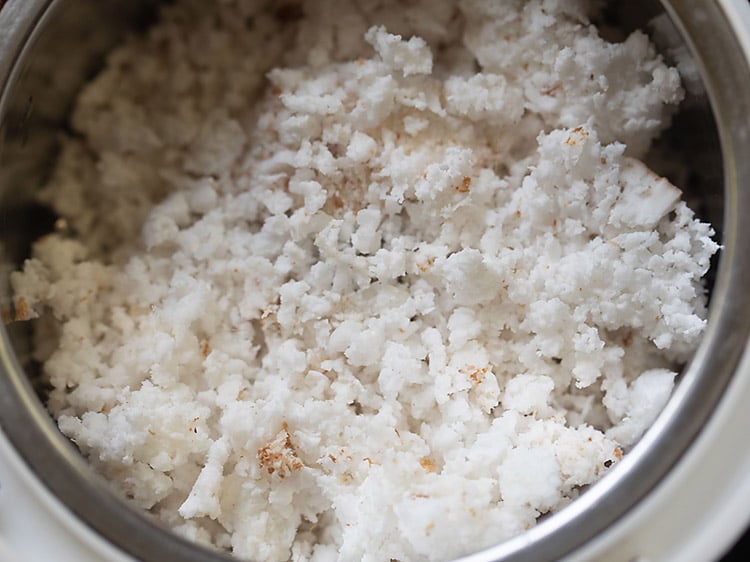
Note: One green chili yields about ½ to 1 teaspoon of chopped chilies. I used about ½ teaspoon of chopped green chilies. For a spicier chutney, consider adding 2 to 3 green chilies based on their pungency.
Tip: Substitute Indian green chilies with ½ teaspoon of Serrano or Anaheim peppers. If using Thai green chilies, add about ¼ teaspoon chopped, as they are quite spicy.
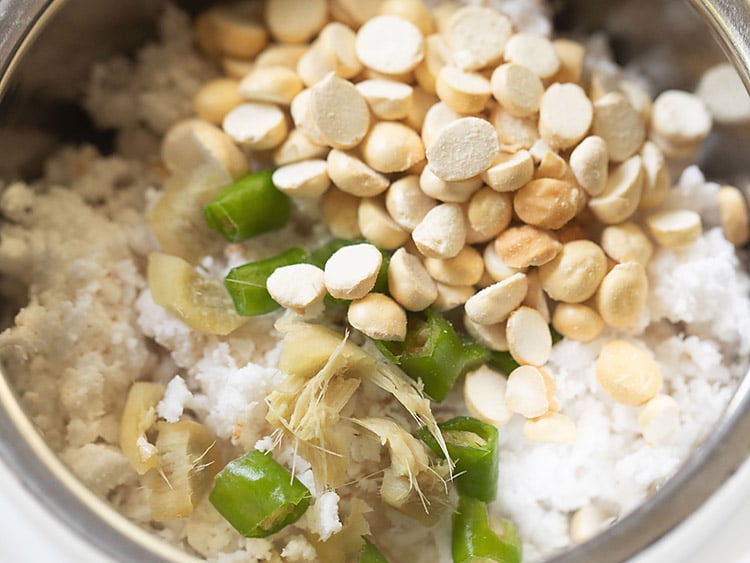
Remember, you can always add more salt, but you can’t remove it once added.

Note: Roasted chana dal is different from raw chana dal; it is crunchy and ready to eat, unlike raw chana dal.
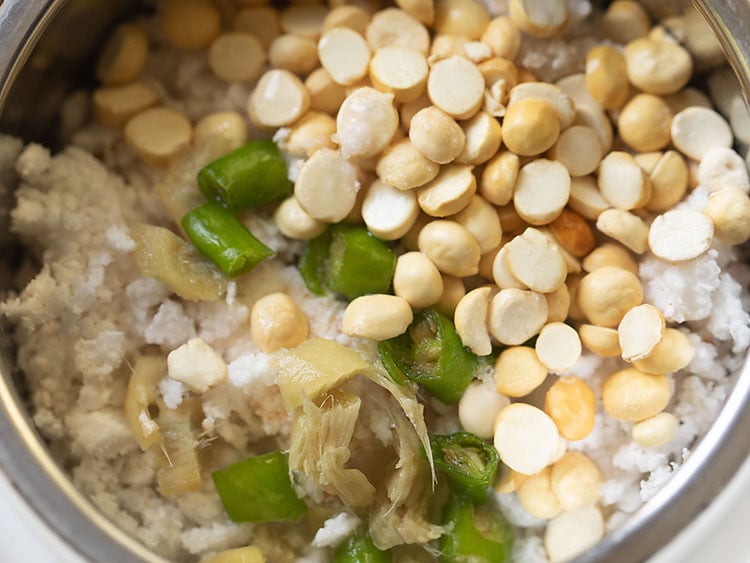

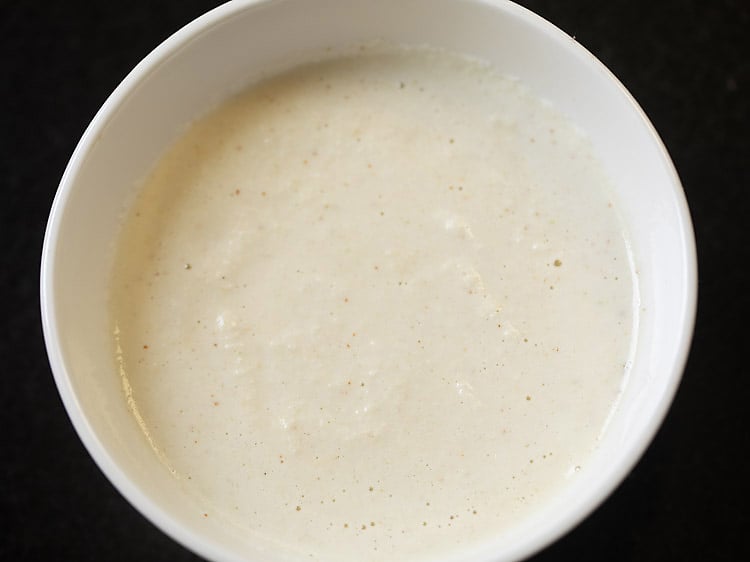
Temper & Make Coconut Chutney
- In a small pan, heat ½ tablespoon of sesame oil (gingelly oil) over low heat.
- Add ½ teaspoon of mustard seeds and allow them to crackle.
- Once the mustard seeds start crackling, add ½ teaspoon of urad dal (split black gram).
- Add ½ teaspoon of cumin seeds. You can skip this if you prefer.
- Stir frequently and fry on low heat.
- The urad dal should turn golden, and the cumin seeds will crackle and brown.
- Once the urad dal is golden, add 1 dried red chili (broken and seeds removed), 9 to 10 curry leaves, and a pinch of asafoetida (hing).
- Stir and fry for a few seconds until the curry leaves become crisp and the red chili changes color.
- Turn off the heat and immediately pour the entire tempering, along with the oil, over the ground coconut chutney in the bowl.
- Mix thoroughly.
- Serve Coconut Chutney with idli, dosa, vada, pongal, or your choice of pakoda.
Note: You can also use sunflower oil, peanut oil, coconut oil, or any neutral-flavored oil.
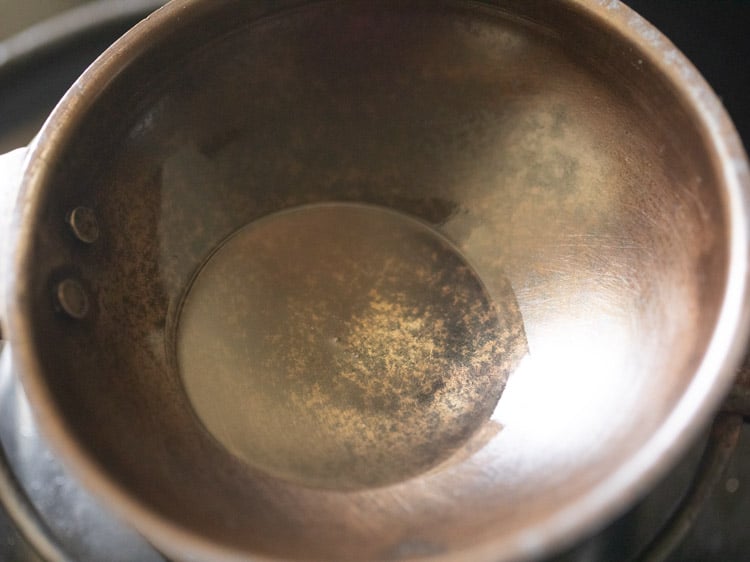
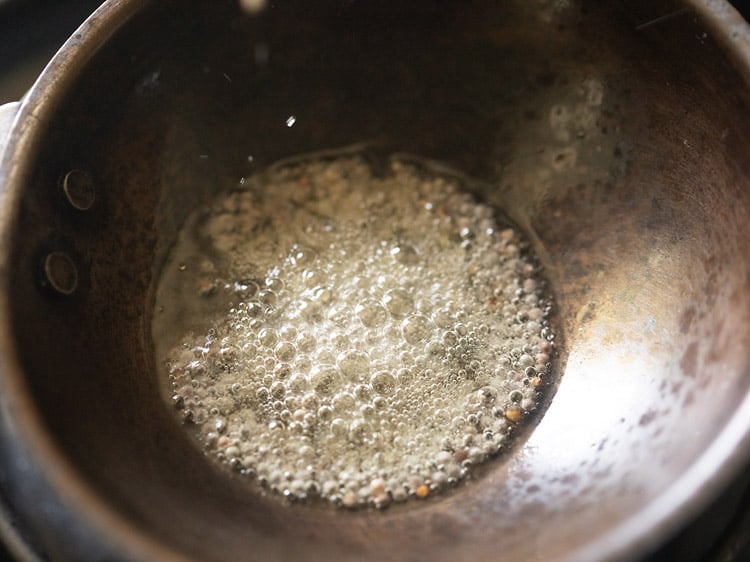
Note: If you don’t have urad dal, feel free to omit it.
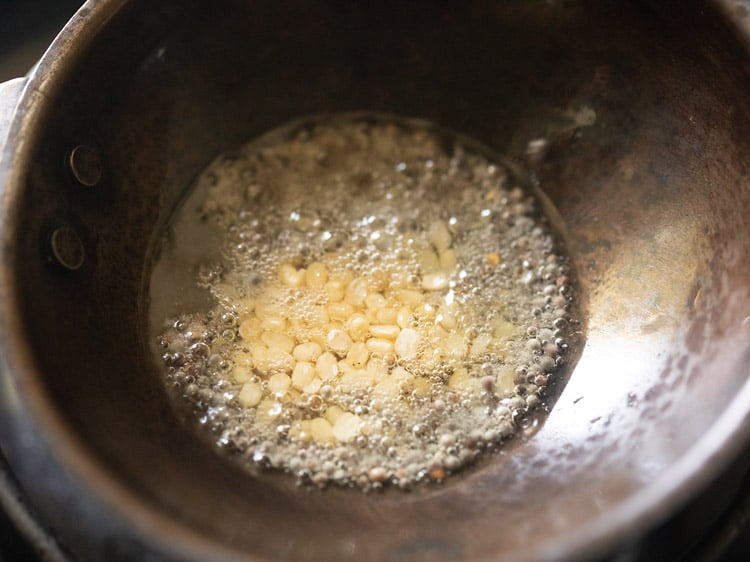
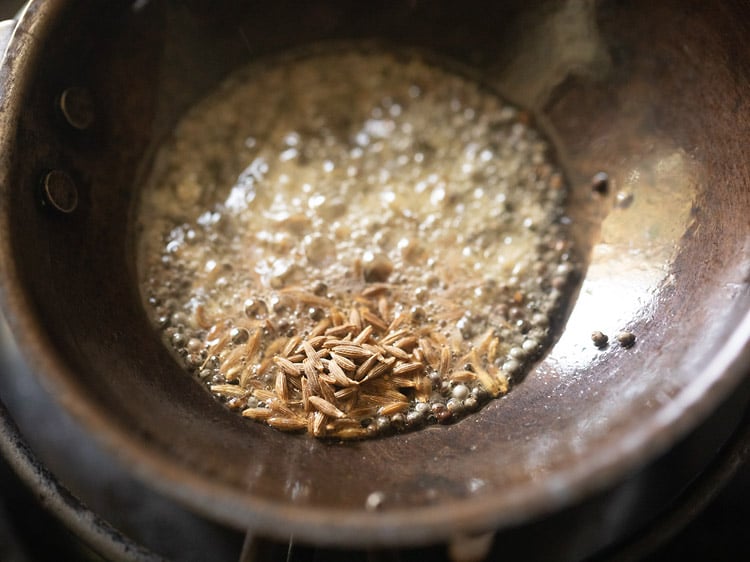


If the pan gets too hot, turn off the flame after adding the red chili, curry leaves, and asafoetida.
Note: If you are gluten-free, ensure your asafoetida is gluten-free, as many commercial varieties contain wheat products.
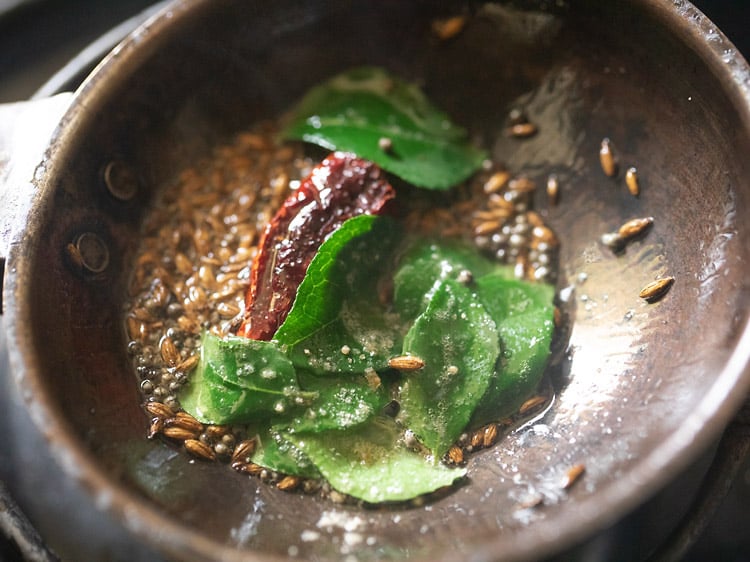
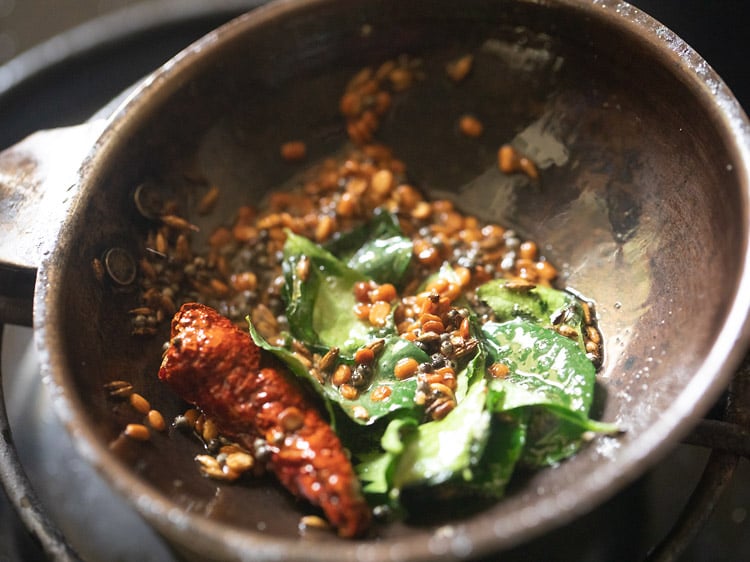



Variations
You can create numerous variations of coconut chutney by adding ingredients such as fresh mint leaves, coriander leaves, garlic, yogurt, tamarind, tomatoes, onions, almonds, carrots, beetroot, unripe mangoes, peanuts, capsicum, and greens like spinach. Each addition will alter the flavor profile of the chutney; for instance, tamarind or tomatoes will introduce a sour note, while fresh herbs will impart a vibrant, herbaceous flavor.
I encourage you to experiment with different combinations of this delightful condiment, as there are countless possibilities to explore!
Here are some of my favorite coconut chutney recipes:
Expert Tips
- For a tangier chutney: To introduce a sour flavor, consider adding one or both of the following ingredients:
- Tamarind: Use about ½ to 1 teaspoon of tamarind and grind it with the other ingredients.
- Yogurt: Once the chutney mixture is ground, transfer it to a bowl and mix in 2 to 3 tablespoons of fresh yogurt before tempering.
- Serve immediately: Coconut chutney is best enjoyed fresh. Avoid leaving it at room temperature for extended periods. If necessary, store it in the freezer section of your refrigerator and consume it within a day.
- Increasing shelf life: Adding tamarind can extend the chutney’s shelf life slightly. You can freeze it for up to one day if tamarind is included.
- Using desiccated coconut: If using desiccated coconut or coconut powder, add warm water while grinding to achieve the desired consistency.
- Scaling: This recipe can easily be halved, doubled, or tripled to suit your needs.
FAQs
Chutney is a condiment that enhances the flavors of various dishes. You can dip your food into it, drizzle it, or dollop it over your preferred meals. This coconut chutney pairs particularly well with South Indian breakfast foods and snacks.
Absolutely! If your coconut is already grated, there’s no need to defrost it first. However, it’s recommended to use coconut that you’ve frozen yourself rather than store-bought packs, as some readers have reported separation issues with store-bought frozen coconut. To avoid this, add warm to slightly hot water while grinding. Unsweetened desiccated coconut can also be used without issue; just grind it with warm water to achieve the right consistency.
Yes! You can also choose to omit the roasted chana dal if you don’t have it on hand.





